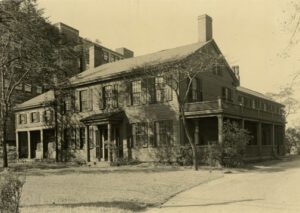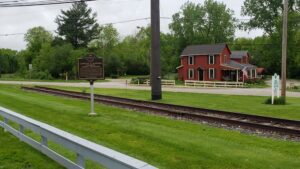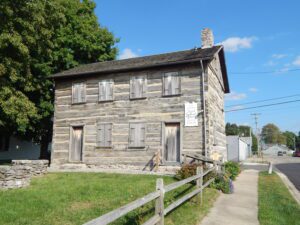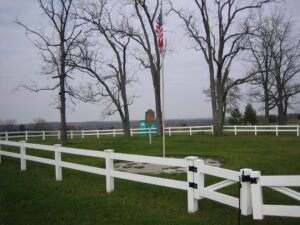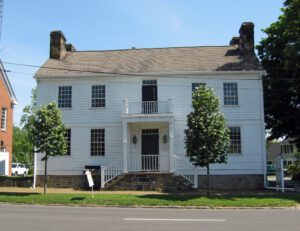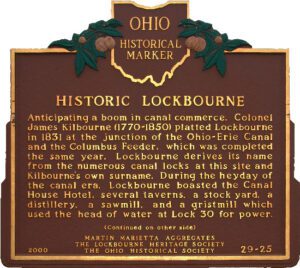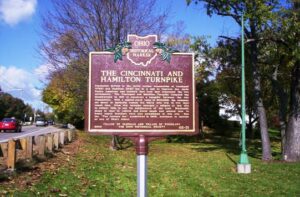, OH
Dunham Tavern is the oldest building still standing on its original site in the City of Cleveland. Once a stagecoach stop on the old Buffalo-Cleveland-Detroit road (modern Euclid Avenue), the tavern dates from 1824. The structure was built by Rufus and Jane Pratt Dunham, who journeyed to the Western Reserve from Mansfield, Massachusetts. The Dunhams sold the tavern in 1853. However, it continued to serve the public until 1857, when it was converted to a private residence. It remained a home until the nineteen thirties, when commercial development threatened the former tavern’s existence. The historic structure was dedicated in 1936 as a museum depicting the life of an early Cleveland pioneer family. Dunham Tavern is listed in the National Register of Historic Places and is a designated Cleveland Landmark building.
, OH
The Randall Secondary rail line dates to the 1850s when the independent Cleveland & Mahoning Railroad (C&M) laid tracks through Aurora, Ohio. C&M, chartered in 1848, linked the Mahoning Valley coal and iron ore fields to the industries and lake port at Cleveland. For over a century, the Randall Secondary contributed to Aurora’s economic life ? fueling the region’s rapid growth during the late 19th and early 20th centuries. In its heyday, the line was an important route for commuter transport and freight service along the 67 miles between Cleveland and Youngstown. Although passenger service into Aurora Train Station stopped in the 1960s, freight service continued into the 1990s. The last remaining track of the Randall Secondary in Aurora stands near the station it served.
, OH
On this site Daniel Gebhart established a tavern in 1811. Taverns were where people gathered to eat, rest, and share news. During spring freshets, boatmen from the Great Miami River stayed at the tavern. Joining them were pioneers coming by the river and overland to settle at Hole’s Station, now Miamisburg. The tavern closed in 1840, became a boarding house, and then sold to become a private residence in 1853. To commemorate the nation’s Bicentennial in 1976, Miamisburg’s bicentennial committee purchased the tavern and gave it to the city. It was restored and opened as a museum in 1982. (Continued on other side)
, OH
A cemetery was established on the site in 1811 and became the final resting place for many of the area’s early pioneer families. The Hanover Township Trustees obtained title to the land in 1823 from John and Anna Farnsworth, and it was expanded for additional plots in 1879. Unfortunately many burials remain unmarked or can be located only by primitive limestone markers above them. The oldest readable headstone is dated 1816. (continued on the other side)
, OH
Built in 1804 by Jonathan Fowler, one of the founders of Poland Village, this structure served as his family home, general store, tavern and a hotel all at the same time. It became an important stagecoach stop on the main highway between Pittsburgh and Cleveland. In 1861, the future President of the United States, William McKinley was sworn into the Union Army from the tavern’s front porch.
, OH
Anticipating a boom in canal commerce, Colonel James Kilbourne (1770-1850) platted Lockbourne in 1831 at the junction of the Ohio-Erie Canal and the Columbus Feeder, which was completed the same year. Lockbourne derives its name from the numerous canal locks at this site and Kilbourne’s own surname. During the heyday of the canal era, Lockbourne boasted the Canal House Hotel, several taverns, a stock yard, a distillery, a sawmill, and a gristmill which used the head of water at Lock 30 for power. (continued on other side)
, OH
Population growth in the newly settled communities of Cincinnati (1788) and Hamilton (1791) led to a call to improve the early Native American and military foot trail that connected the two settlements. The Cincinnati and Hamilton Turnpike Company was incorporated in 1817 to construct a turnpike between the two communities. With a capital-stock value of $100,000, the company set about to markedly reduce the thirty mile trip to two days travel time. From this turnpike emerged a tollgate at this site to collect tolls to pay for maintenance of the road. Blacksmith shops to tend to vehicle and horse needs and several inns to house weary travelers were also established at this site. One inn, “The Century Inn,” established in 1806, continues to operate as one of Ohio’s oldest.


